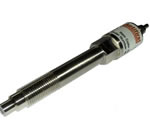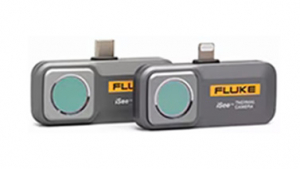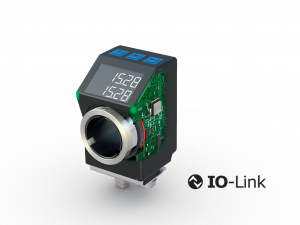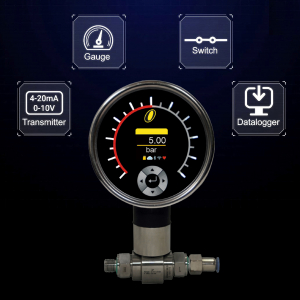SWOPP Probes Create Windows On Processing

Aptifirst’s SWOPP range of sapphire window optical process probes is ideal for laboratory, pilot plant and inline monitoring and for quality and process control. SWOPP probes, using the 0.17-5.5-micron optical transmission range of sapphire, can work in the near-infrared, visible and ultraviolet parts of the spectrum, permitting various spectrometric techniques to be employed.
These precision-engineered probes allow, via fibre-optic connections, spectrometric or optical inspection to be carried out online during chemical reactions, mixing and processing operations. A great many of measurement tasks in process control, like monitoring of reactions, can be achieved particularly with FT-NIR spectroscopy. Additionally, UV and visible spectroscopy and also simple visual observation with CCTV may be engaged to assay various diverse aspects of a material’s condition and composition during processing in real time, with the data capable of being used for process control. The content of highly complex mixtures can be determined simultaneously with solid, liquid or gaseous entities.
The precision-polished sapphire lenses are resistant to abrasion and chemical attack, and the probes can operate at up to 400°C (750°F) and at pressures of up to 700 bars (10,000psi) or optionally greater, so that in-process materials may be monitored for parameters such as degradation, moisture content and additive levels in real time and under live manufacturing conditions.
The SWOPP probe bodies are generally machined in stainless steel, although other materials such as Inconel are possible. The geometry may be tailored to suit specific applications, for example, to fit a standard ½”-20-UNF “Dynisco”-type transducer port with a 45 degree sealing face, in ¼” or 1/8” diameter tubes for sealing with “Swagelok”-type fittings, and with right-angled bends, for example to fit the nozzle of an injection moulding machine.
The probes can be supplied for transmission mode, where two probes are mounted facing each other across the process stream, with one probe supplying the light source and the other receiving the signal attenuated by the test material, or they can be supplied for reflectance mode.
Here, a single probe has a central optical fibre through which the light source is beamed, and this central fibre is surrounded by typically 6 or 7 other fibres that collect the reflected or back-scattered attenuated light and convey it to the detector of the spectrometer.
SWOPP probes can be supplied with an integral optical fibre with a ’tail’ of a suitable length to suit the user’s circumstances or with an industry-standard optical-fibre connector such as the SMA 905.
Alternatively, they can be supplied as a holder for a standard fibre-optic bundle, so that the SWOPP probe may be left in situ so as not to disturb the process, while the fibre-optic spectrometer is employed elsewhere. The SWOPP01 model is just such a probe.
In addition, the sapphire window lenses can be machined for precision focal lengths.
Roy Carter, technical director of Aptifirst Ltd, said: ’SWOPP probes are precision-machined adaptors that will provide a window onto materials as they are being processed and transported.
‘With real-time spectroscopic analysis, information can be provided to enable early decisions to be made regarding processing conditions, additive levels, etc, to minimise wastage, optimise energy usage and maximise productivity,’ he added.
SWOPP sapphire window probes have applications in many sectors of science, technology and industry. For example, the major application areas in the food and feed industry include dairy and meat, beverages, bakery ingredients and condiments as well as grains, seeds, feed and forage. Here, parameters like protein, fat, starch, moisture or dry matter can be analysed as well as more specialized parameters like alcohol or nitrogen content.
In the chemical industry, parameters including hydroxyl value, acid number, saponification value, iodine number, moisture content, homogeneity, and, of course, the rate and state of chemical reactions may be monitored. In petrochemicals, octane- and cetane number, distillation-, flash and cloud point, aromatic content, and PIONA analysis, are performed, particularly by FT-NIR techniques.
For polymer technology applications, density, viscosity, cross-link density, end-group analysis, stabilizer or monomer content may be determined. In the paper industry, applications include cellulose content, fillers, glues and wet strength resins, silicon content, grammage and degree of wet expansion; the pharmaceutical and cosmetics industries employ spectrometric technology to effectively and cost efficiently solve a large range of tasks, eg for checking active ingredient concentration during processing.
As well as SWOPP probes, Aptifirst supplies a wide range of other equipment including materials testing instruments and instrumentation for radio telemetry, strain gauge and load cell conditioning, acceleration, temperature and process control, weighing, datalogging, temperature monitoring via GSM text messages and emails a Limiting Oxygen Index flammability tester, die swell, load cells, pressure sensors, accelerometers, and more. Also, Aptifirst supplies precision extrusion dies for rheological studies, and designs and building special-purpose and prototype instruments, including bespoke software.
Similar articles
More from Aptifirst
- A Cost Effective Process Monitor And Controller With Twin Alarm Setpoints 14th October 2014
- Strain gauge can be configured for specific applications 13th October 2014
- Monitor alarm can prevent expensive weighing errors 2nd April 2014
- Miniature multi-axis accelerometers 2nd August 2013












Write a comment
No comments